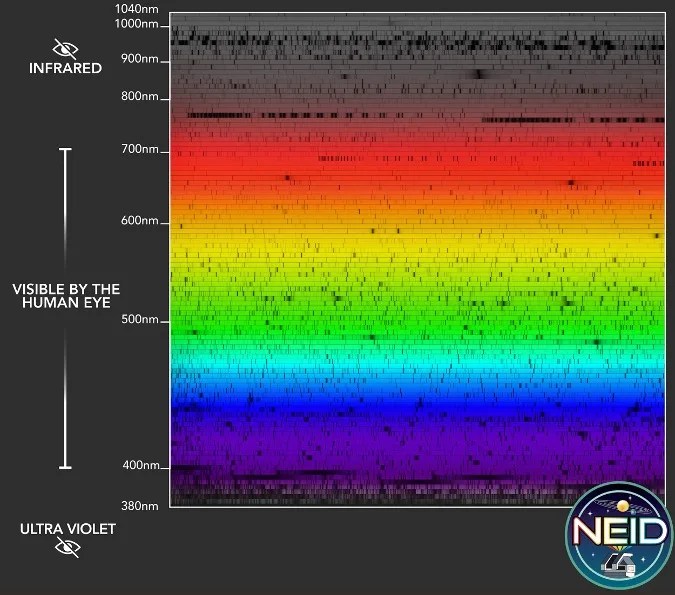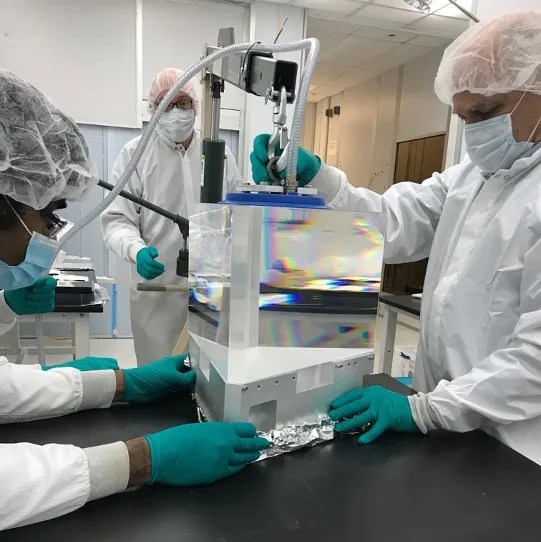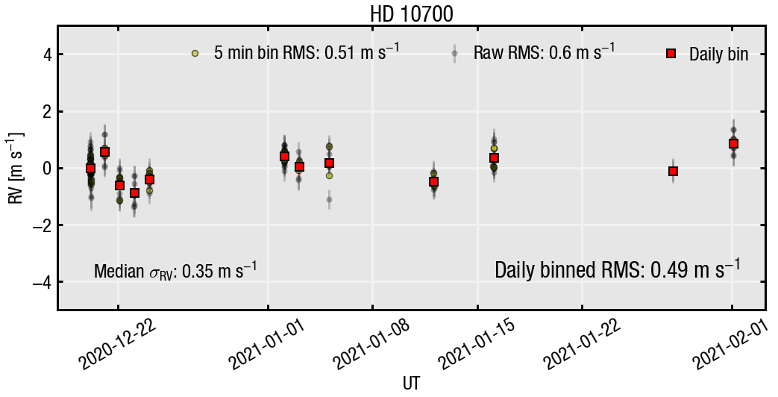PROJECT
The NEID Doppler Spectrometer
SNAPSHOT
A collaborative partnership between NASA and the National Science Foundation (NSF) has produced the NEID spectrometer, which makes extremely precise measurements of the wobbles of stars caused by the planets that orbit them. NEID will be used to characterize exoplanets discovered by NASA’s Transiting Exoplanet Survey Satellite (TESS), and to discover new exoplanets that will be targets of future NASA missions to make direct images of nearby worlds.
NASA missions such as Kepler and TESS have revealed that the galaxy is full of exoplanets—planets orbiting stars other than the Sun. However, identifying and characterizing the exoplanets around the nearest stars is a daunting challenge because they orbit their stars so closely that their light is completely dwarfed by glare from the parent stars. To identify exoplanets, astronomers rely on indirect evidence, including measurements that detect the wobble of a star as its planets tug on it gravitationally. Such wobbles are tiny; the velocity of a star induced by a small planet like Earth is mere centimeters per second. Due to the Doppler effect, the wobbling motion slightly shifts the wavelengths of light emitted by the star. When recorded on an astronomical detector, these small shifts amount to tiny fractions of a pixel. Reliably measuring such minuscule effects requires an extremely stable astronomical Doppler spectrometer.
NEID is pronounced "NOO-id" (sounds like "fluid") and resides in an observatory located on land of the Tohono O'odham Nation. NEID's pronunciation evokes a word that roughly translates as "to see" in the Tohono O'odham language.
The NASA-NSF Exoplanet Observational Research (NN-EXPLORE) partnership, a collaboration to advance exoplanet science, commissioned the NEID Spectrometer in response to the astronomical community’s desire for a publicly accessible, extremely precise Doppler spectrometer. The primary goal of NEID is to provide ultra-precise Doppler measurements of nearby stars to: (1) enable precise mass measurements of new exoplanets discovered by TESS, and (2) facilitate the discovery of nearby exoplanets that will be targets of next-generation NASA space missions to obtain direct images of exoplanets. NEID is installed on the 3.5-meter WIYN Telescope at Kitt Peak National Observatory in Arizona.
NEID was openly competed and NASA selected a global consortium of astronomers led by Professor Suvrath Mahadevan at Penn State University to develop this new technology. It achieves world-class Doppler measurement precision through an integrated network of subsystems dedicated to producing extremely stable, high-fidelity spectra of its target stars. NEID uses large-format, high-quality optics to capture starlight spanning the full visible range and beyond, providing maximal information on a star’s motion and atmospheric variability. The optics are encased in a vacuum chamber and temperature-controlled to sub-milliKelvin stability. Such strict maintenance of the instrument’s environment eliminates measurement instability caused by variability of the atmospheric index of refraction or thermal expansion of the optical mounts. The system is calibrated by a laser frequency comb, which uses pulsed lasers and precisely spaced optical cavities to generate a series of laser lines fixed in brightness and frequency. These laser lines provide a stable reference point against which the instrument may be monitored for inevitable measurement baseline drifts caused by processes such as atomic-level settling of the optics.

NEID completed its on-sky commissioning in early 2021. The commissioning tests consisted primarily of repeated measurements of stars known to exhibit relatively stable Doppler motions. Throughout the commissioning phase, NEID consistently demonstrated on-sky Doppler measurement stability better than 1 meter per second. No star is perfectly Doppler-stable; the variability in a star’s atmosphere is a source of intrinsic Doppler noise, and nearly every star hosts small exoplanets that cause Doppler shifts. Thus, for NEID to demonstrate sub-meter-per-second stability on real stars, its instrumental measurement precision must be significantly better than 50 centimeters per second. NEID’s demonstrated Doppler precision presently rivals or exceeds that of any other spectrometer in the world.
NEID entered full science operations in August 2021. Thanks to the NN-EXPLORE partnership, astronomers around the world may propose to use NEID for a wide variety of experiments related to exoplanet detection and characterization. This opportunity represents the first time that a significant fraction of a telescope’s available time has been made publicly accessible for use of an ultra-precise Doppler instrument. Projects for which NEID is especially useful include surveys to discover new exoplanets, mass measurements of planets found to transit (eclipse) their host stars, and determination of the misalignment between the orbital axis of a planet and the rotational axis of the host star. NEID’s world-class precision allows such measurements to be made with a speed and level of detail not possible with previous generations of Doppler spectrometers.
PROJECT LEAD
Prof. Suvrath Mahadevan, Penn State University
SPONSORING ORGANIZATION
NASA Astrophysics Division, NSF Division of Astronomical Sciences



































